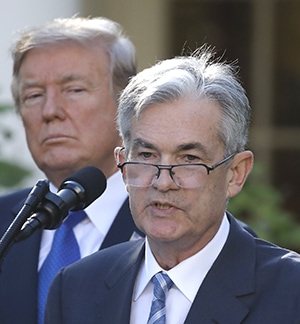Jerome Powell is President Donald Trump’s nominee to replace Janet Yellen as chair of the central bank. He will start his tenure inFebruary 2018.
The US Federal Reserve is about to appoint its first non-economist chair in almost 40 years. Jerome Powell, who is already a Fed governor, is President Donald Trump’s nominee to replace Janet Yellen as chair of the central bank starting in February of next year.

The last non-economist who was appointed chair of the Fed was William Miller (1978–1979), an investment banker. His tenure was characterized by high inflation and unemployment.
On the one hand, Powell’s nomination will provide comfort to investors. In addition to being a Fed governor, he spent several years at the Treasury Department and has expressed views aligned with Yellen’s perception of the US economic condition and the powers and limitations of monetary policy.
But his private-sector experience and nontraditional education raise concerns about his ability to independently lead macroeconomic policies.
A lawyer by training, Powell’s approach to macroeconomic policies is interdisciplinary. He strongly believes that certain post-2008 financial regulation should be reevaluated, saying that some aspects of it “may be redundant or inefficient, or utterly essential.”
Some commentators question the potential “business character” of Powell and its impact on the Fed’s monetary policies. Yet chairs’ writings and statements have predicted their views exceptionally well in the past, say Christina Romer and David Romer in their study of the leadership of the Federal Reserve since 1936, which includes an analysis of six chairs serving until the mid-2000s.
The study shows that previous views held by chairs have led to predictable policies. Powell’s prior statements support Yellen’s main views on the economy and therefore suggest limited changes.
One area where his past statements indicate a potential policy change is in Fed communication. While policymakers, markets and investors expect central–bank communications to provide certainty and guidance, Powell prefers a more ambiguous approach.
In a 2016 speech in Washington, DC, he noted: “Communications should do more to emphasize the uncertainty that surrounds all economic forecasts, should downplay short-term tactical questions such as the timing of the next rate increase, and should focus the public’s attention instead on the considerations that go into making policy across the range of plausible paths for the economy.”
Clearly, implementing such a strategy would change the way markets and financial institutions respond to Fed communication.



